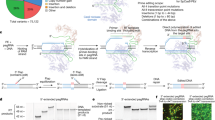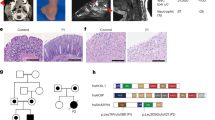Abstract
Human chitotriosidase (Chit) is a member of the chitinase family and it is synthesized by activated macrophages. Recently, a genetic polymorphism was found to be responsible for the common deficiency in Chit activity, frequently encountered in different populations. We analyzed the Chit gene in some ethnic groups from the Mediterranean and African areas, to evaluate whether the Chit gene polymorphism correlates with the changes in environmental features and the disappearance of parasitic diseases. We found a heterozygote frequency for the duplication of 24 bp in exon 10 of 44% in Sicily and 32.71% in Sardinia, whereas those homozygous Chit deficient were 5.45 and 3.73%, respectively. In contrast, in Benin and Burkina Faso, both mesoendemic regions for Plasmodium falciparum malaria and other infections due to intestinal parasites, a low incidence of Chit mutation was found (heterozygous 0 and 2%, respectively) and no subject was homozygous for Chit deficiency. Our results provide evidence of the fact that the low frequency or the absence of mutant Chit gene may represent a protective factor in the population still living in disadvantaged environmental conditions. The present study suggests that the disappearance of parasitic diseases and the improved environmental conditions may have ensued the occurrence of a high percentage of 24-bp mutation in Sicily, in Sardinia and in other Mediterranean countries, whereas in the sub-Saharan regions (Benin and Burkina Faso), the widespread parasitic diseases and the poor social status have contributed to maintenance of the wild-type Chit gene.
This is a preview of subscription content, access via your institution
Access options
Subscribe to this journal
Receive 6 digital issues and online access to articles
$119.00 per year
only $19.83 per issue
Buy this article
- Purchase on Springer Link
- Instant access to full article PDF
Prices may be subject to local taxes which are calculated during checkout



Similar content being viewed by others
References
Debono M, Gordee RS . Antibiotics that inhibit fungal cell wall development. Annu Rev Microbiol 1994; 48: 471–497.
Araujo AC, Souto-Padron T, de Souza W . Cytochemical localization of carbohydrate residues in microfilariae of Wuchereria bancrofti and Brugia malayi. J Histochem Cytochem 1993; 41: 571–578.
Shahabuddin M, Kaslow DC . Plasmodium: parasite chitinase and its role in malaria transmission. Exp Parasitol 1994; 79: 85–88.
Boot RG, Renkema GH, Strijland A, van Zonneveld AJ, Aerts JM . Cloning of a cDNA encoding chitotriosidase, a human chitinase produced by macrophages. J Biol Chem 1995; 270: 26252–26256.
Henrissat B, Bairoch A . New families in the classification of glycosyl hydrolases based on amino acid sequence similarities. Biochem J 1993; 293: 781–788.
Guo Y, He W, Boer AM et al. Elevated plasma chitotriosidase activity in various lysosomal storage disorders. J Inher Metab Dis 1995; 18: 717–722.
Hollak CE, van Weely S, van Oers MHJ, Aerts JMFG . Marked elevation of plasma chitotrioaldase activity. A novel hallmark in Gaucher disease. J Clin Invest 1994; 93: 1288–1292.
Barone R, Di Gregorio F, Romeo MA, Schilirò G, Pavone L . Plasma chitotriosidase activity in patients with β-thalassemia. Blood Cell Mol Dis 1999; 15: 1–8.
Barone R, Simporè J, Malaguarnera L, Pignatelli S, Musumeci S . Plasma chitotriosidase activity in acute Plasmodium falciparum malaria. J Trop Pediatr 2003; 49: 63.
Renkema GH, Boot RG, Strijland A et al. Synthesis, sorting, and processing into distinct isoforms of human macrophage chitotriosidase. Eur J Biochem 1997; 244: 279–285.
Eiberg H, Den Tandt WR . Assignment of human plasma methylumbelliferyl-tetra-N-acetylchitotetraoside hydrolase or chitinase to chromosome 1q by a linkage study. Hum Genet 1997; 101: 205–207.
Boot RG, Rankema GH, Verhoek M et al. The human chitotriosidase gene. Nature of inherited enzyme deficiency. J Biol Chem 1998; 273: 25680–25685.
Canudas J, Cenarro A, Civeira F et al. Chitotriosidase genotype and serum activity in subjects with combined hyperlipidemia: effect of the lipid-lowering agents, Atorvastatin and Bezafibrate. Metabolism 2001; 50: 447–450.
Ciulla TA, Sklar RM, Hauser SL . A simple method for DNA purification from peripheral blood. Anal Biochem 1988; 174: 485–488.
Choi EH, Zimmerman PA, Foster CB et al. Genetic polymorphisms in molecules of innate immunity and susceptibility to infection with Wuchereria bancrofti in South India. Genes Immun 2001; 2: 248–253.
Barone R, Simpore J, Malaguarnera L, Pignatelli S, Musumeci S . Plasma chitotriosidase activity in acute Plasmodium falciparum malaria. Clin Chim Acta 2003; 331: 79–85.
Malaguarnera L, Musumeci S . The immune response to Plasmodium falciparum malaria. Lancet Infect Dis 2002; 2: 472–478.
Lauw FN, te Velde AA, Dekkers PE et al. Activation of mononuclear cells by interleukin-12: an in vivo study in chimpanzees. J Clin Immunol 1999; 19: 231–232.
Malaguarnera L, Imbesi RM, Pignatelli S, Simpore J, Malaguarnera M, Musumeci S . Levels of interleukin-12 in Plasmodium falciparum malaria: correlation with the severity of disease. Parasite Immunol 2002; 24: 387–389.
Doolan DL, Hoffman SL . IL-12 and NK cells are required for antigen-specific adaptive immunity against malaria initiated by CD8+ T cells in the Plasmodium yoelii model. J Immunol 1999; 163: 884–892.
Riera Palmero J . Work, Rice and malaria in Valencia in the XVIIIth century. Physis Riv Int Stor Sci 1994; 31: 771–785.
Kitron U . Malaria, agriculture, and development: lessons from past campaigns. Int J Health Serv 1987; 17: 295–326.
van der Heide RM . The rise and decline of malaria in The Netherlands. Ned Tijdschr Geneeskd 1988; 132: 2372–2374.
Barone R, Bertrand G, Simpore J, Malaguarnera M, Musumeci S . Plasma chitotriosidase activity in beta-thalassemia major: a comparative study between Sicilian and Sardinian patients. Clin Chim Acta 2001; 306: 91–96.
Rosatelli MC, Dozy A, Faa V et al. Molecular characterization of beta-thalassemia in the Sardinian population. Am J Hum Genet 1992; 50: 422–426.
Cappellini MD, Martinez di Montemuros F, De Bellis G, Debernardi S, Dotti C, Fiorelli G . Multiple G6PD mutations are associated with a clinical and biochemical phenotype similar to that of G6PD Mediterranean. Blood 1996; 87: 3953–3958.
Barone R, Malaguarnera L, Angius A, Musumeci S . Plasma chitotriosidase activity in patients with beta-thalassemia. Am J Hematol 2002; 71: 7–10.
Acknowledgements
We thank Dr Denti Gabriella for providing Sicilian blood samples and Mr Giuseppe Rapicavoli for his skillful technical assistance in laboratory work.
Author information
Authors and Affiliations
Corresponding author
Rights and permissions
About this article
Cite this article
Malaguarnera, L., Simporè, J., Prodi, D. et al. A 24-bp duplication in exon 10 of human chitotriosidase gene from the sub-Saharan to the Mediterranean area: role of parasitic diseases and environmental conditions. Genes Immun 4, 570–574 (2003). https://doi.org/10.1038/sj.gene.6364025
Received:
Revised:
Accepted:
Published:
Issue Date:
DOI: https://doi.org/10.1038/sj.gene.6364025
Keywords
This article is cited by
-
CSF biomarkers of neuroinflammation in distinct forms and subtypes of neurodegenerative dementia
Alzheimer's Research & Therapy (2020)
-
Evaluation of chitotriosidase as a biomarker for adipose tissue inflammation in overweight individuals and type 2 diabetic patients
International Journal of Obesity (2019)
-
Chitotriosidase Expression during Monocyte-Derived Dendritic Cells Differentiation and Maturation
Inflammation (2015)
-
Allele frequency of a 24 bp duplication in exon 10 of the CHIT1 gene in the general Korean population and in Korean patients with Gaucher disease
Journal of Human Genetics (2014)
-
Association of 24 bp Duplication of Human CHIT1 Gene with Asthma in a Heterozygous Population of North India: A Case–Control Study
Lung (2014)



